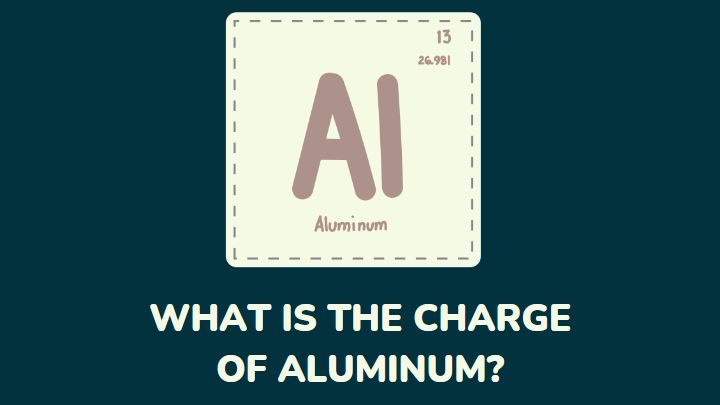Aluminium is a post-transition metal that has multiple oxidation states but it is known for its +3 charge. However, aluminum may exhibit a +2 charge when it reacts with other elements.
The charge of any element shows whether it gained or lost electrons. The integer after the sign shows how many electrons were gained or lost. Like other metals, aluminum tends to lose electrons instead and gain a positive charge.
Read on to find out if aluminum exhibits one charge in all its compounds.
Properties of aluminum
- Aluminium is a soft metal from the boron group group IIIA or group 13
- It has an atomic number of 13 and a mass number of 26.98
- Aluminium is the third most abundant metal in the Earth’s crust
- Aluminium is a ductile metal with a bluish-white or silvery color
- Aluminum is not a lustrous metal but it is reflective
- It is soft and malleable but becomes strong when it becomes tempered or alloyed with silicon and iron
- It is also a good conductor, which is why it finds use in the manufacture of cookware kitchenware, and wiring
- Aluminium has a way of fighting rust. It produces a self-protecting oxide layer that prevents rust
- Aluminium however has a low density when compared with metals like iron and copper. It has a density of 2.70 g/cm3 at room temperature
- In addition, aluminum has a melting and boiling point of 1220.58°F (660.32°C) and 4478°F (2470°C)
- The metal has an electronic configuration of [Ne] 3s23p1 and 2, 8, 3 electrons per shell
What is the charge of aluminum?
Aluminium has a charge of +3.
Aluminium has 13 electrons and 13 protons. These electrons are distributed across the shells in the order 2, 8, 3. To form a stable ion, it loses the three electrons in the outermost shell and has 10 electrons.
Generally, the charge of an atom is obtained by subtracting the number of electrons from the number of protons. When you do this with aluminum, it gives the +3 charge, Al3+.
What is the charge of aluminum in aluminum oxide?
Aluminum oxide, Al2O3, has a formal charge of 0 and the charge of the oxide is -2.
Mathematically,
2Al + 3(-2) = 0
2Al – 6 = 0
+6 = 2Al
Al = +3
What is the charge of Al in Al2(SO4)3?
In, Al2(SO4)3, the charge of Al is +3.
2Al + 3(6 + 4(-2)) = 0
2Al + 18 – 24 = 0
0 = 2Al – 6
+6 = 2Al
Al = +3
What is the charge of the ions in AlCl3?
The charge of the Al and Cl ions in aluminum chloride (AlCl3) is +3 and -1.
What is the nuclear charge of aluminum?
The nuclear charge of aluminum is 13. The value of the nuclear charge is the same as the atomic number.
What is the effective nuclear charge of Al?
The effective nuclear charge of Al is +3.
FAQs
How many oxidation states does aluminum have?
Aluminium has three oxidation states. It could be +1, +2, or +3.
Why does aluminum exhibit a +2 charge?
Aluminium naturally has a +3 charge. But, in compounds like AlO, aluminum oxide, it exhibits a +2 charge because it loses only two electrons to oxygen. However, Al2+ is unstable.
What is the charge of Al in AlOH?
The charge of Al in AlOH3 is +3.
Conclusion
The charge of Al is +3. This metal exhibits +1, +2, and +3 oxidation states. As a post-transition metal, aluminum resembles other transition metals with the tendency to exhibit multiple charges. But, the +3 charge is the most common.
Unlike aluminum, metals like tin can exhibit more than one charge. You should learn about the charge of tin too.
Thanks for reading.
